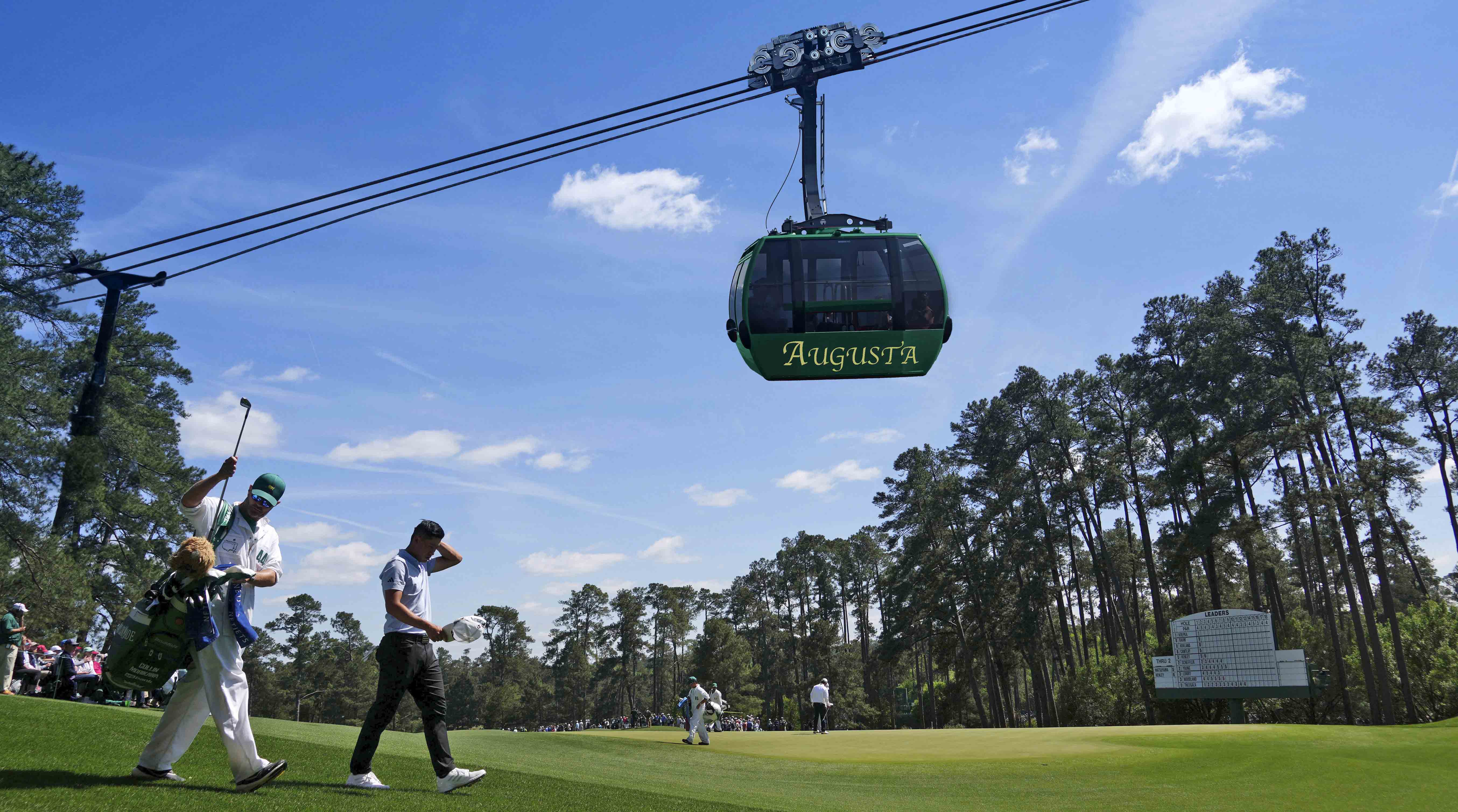Augusta National Should Swap Its 9th and 18th Holes

Welcome to SI Golf’s Inaugural Bad Takes Week, where our writers and editors have been asked to offer their worst ideas and defend them. These are columns on takes they believe in, even if they made the rest of the room groan during the pitch meetings. Keep an eye out for more bad takes throughout the week.
Let’s start here: Augusta National’s 18 holes are pretty close to tournament-golf perfection. Its par-4 18th has been the scene to countless indelible moments. Phil Mickelson’s breakthrough birdie in 2004. Greg Norman’s meltdown in 1986. Triumphs from Tiger, Jack, Seve, Arnie and more. The 18th hole is a nice stage. It works.
But can we be honest? It could be a tad better.
A brief history lesson: One of the smartest things Augusta National did in its early days was flip its nines—that’s right, back when the course first opened, today’s 10th through 18th holes were originally Nos. 1–9. Bobby Jones, the club’s founder who codesigned the course with Alister MacKenzie, quickly realized his opening nine holes offered more suspense and risk-reward, while the existing low-lying openers had frosty greens on chilly mornings. So he swapped the nines. You could make a case that there has never been a better routing decision in golf history.
But there’s one loose end dangling on Augusta’s back nine that could be strengthened: the current 18th hole. Again: It’s good. 465 yards. Narrow chute off the tee. Uphill. Little bend to the right. But to close Augusta National? For the green jacket, the Women’s Am title and whatever other ANGC events the future holds? Let’s consider another option.
For this installment in Bad Takes Week, it says here Augusta should resume its tradition of routing adjustments with one last single-hole swap: The 18th and 9th holes should trade places, making today’s infinitely interesting and wildly underrated 9th hole Augusta’s new closer.
The current 9th (future 18th) is a 460-yard par-4 that requires righthanded hitters to smash a draw off the tee to bend around the pine-guarded corner. Find the fairway, and the fun continues on the uphill approach shot, as players face an utterly ruthless false-fronted putting surface, where anything short … slowly … rolls … down … the … hill. Those protracted ball-trundle moments will heighten the stakes as a finishing hole. Video clips of players coming up just short will be agonizing and dramatic—in other words, phenomenal television.
Depending on the pin position, putts from the center of the green can be a side-winding adventure (also great TV). The hole finishes nearest to the clubhouse—remember it was the original 18th—so it’s a breeze for spectator viewing and compelling on TV screens. Its backdrop is framed by pines and that gorgeous antebellum clubhouse, which isn't really part of the scene at today's 18th.
Approach shots that bound over the green, or settle on the back of the putting surface can leave a treacherous shot, as the green slopes severely from back to front. A poor sap stuck above the hole could easily chip or putt right off that false front and trickle … all … the … way … down. Check out how Tiger Woods handled his putt from above the hole in 2019, en route to victory.
Can you imagine if that was a two-putt to win?
There’s one minor hurdle I can foresee with this modest proposal: shuttling players from the current 17th hole—which in my plan will remain the 17th hole—to the current 9th (future 18th) tee box. The distance between those two points is about 800 yards. A tough walk. But this complication presents another opportunity for Augusta to prove yet again that it lives on the cutting edge of golf-course innovation.
Throughout its history Augusta has been a pioneer for ideas that have later been adopted and embraced by the golf world. Scoreboards with red numbers for under par? Started at Augusta. Rope lines to separate galleries from players? Augusta. Grandstands for fans? Radio, color TV and overseas broadcasts? Check, check and check. Heck, the core of its clubhouse, built in 1854, is recognized as the first cement building in the South. This is a place that launches trends.
Augusta innovation would continue under my plan with the first-ever major-championship gondola, which would silently and efficiently whisk players, caddies, markers and golf bags from behind the 17th green to the new home-hole tee box. I ask you: Does this look absurd, or does it look like progress?

All it’ll take is several million dollars, a little imagination and a quick consult with someone at an Aspen ski resort. But in the interest of having the greatest finish in golf, Augusta would level up if the current 9th and 18th holes swapped spots in the rotation, providing the dramatic closing hole Bobby Jones always wanted.
What do you think of our Bad Takes? Got one of your own? Email your feedback here (include name and hometown) and we’ll publish the best next week.
